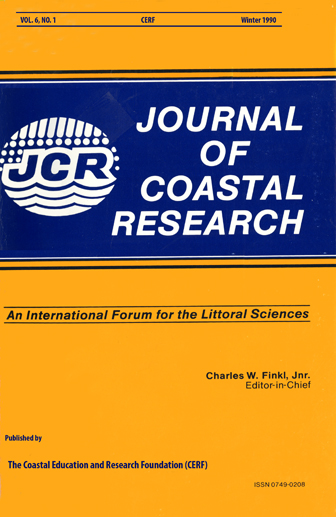Littoral Cell Response to Interannual Climatic Forcing 1983-1987 on the Central Oregon Coast, USA
Keywords:
Littoral, longshore transport, beach erosion, wave climate, sea level, ENSO, Oregon.Abstract
Longshore distributions of beach sand (1983- 1987) in a 17.2 km long subcell (Seal Rocks Yachats Point) of the central Oregon coast have been studied to document interannual variability of longshore transport resulting from and following the anomalous 1982-83 north Pacific climatic event. Some 4-8 x 106 m3 of beach sand was displaced northward from the 7.4 km long southern end of the headland bounded subcell during the 1982-83 winter. The 1982 -83 volume of interannual longshore displacement (5-11 x 102 m3 per meter of shore line distance) from the southern 7.4 km of the cell exceeds a reported annual seasonal exchange (across -shore) from an adjacent cell by at least a factor of 5. The northward displacement of beach sand in 1982-83 resulted from (1) a southward 10° -15° latitude (1,000 -1,500 km) shift of the winter (Dec-Feb.) geostrophic wind guide (1014-1016 mb), i.e. a proxy for the seasonal storm tracks relative to a 16 year mean of 50-55° N, and (2) an above average (but not exceptional) energy of winter wave climate, based on weekly and daily mean significant wave heights (H1/3). An EI Nino -Southern Oscillation (ENSO) related elevation of mean sea level (some 30 cm above a 16 year mean) might have facilitated offshore transport of the beach sand during the winter period, but it is not considered to have been important in the longshore redistributions of beach sand. A two year delay in the southward return of the northward displaced sand corresponds to winter geostrophic wind guides of very high latitude (55-65° N). Historical records of erosion and accretion of beaches and the Alsea Bay spit within the subcell indicate that the 1983-87 cycle of sand redistribution in central Oregon was the most extensive in the last 24 years (period of available records).


